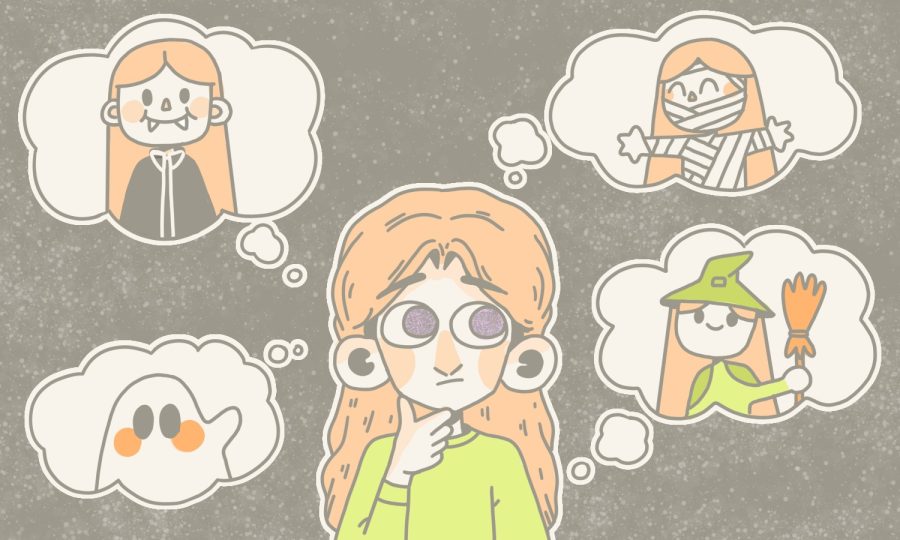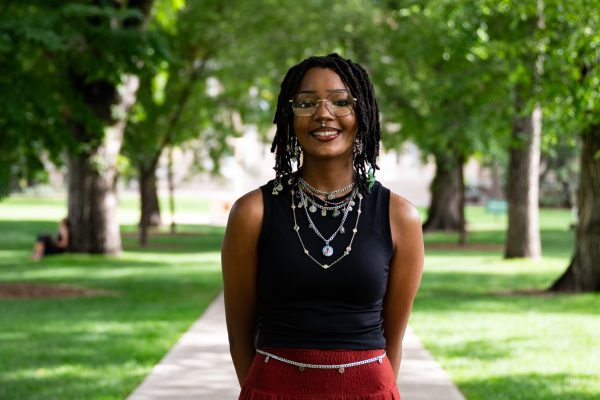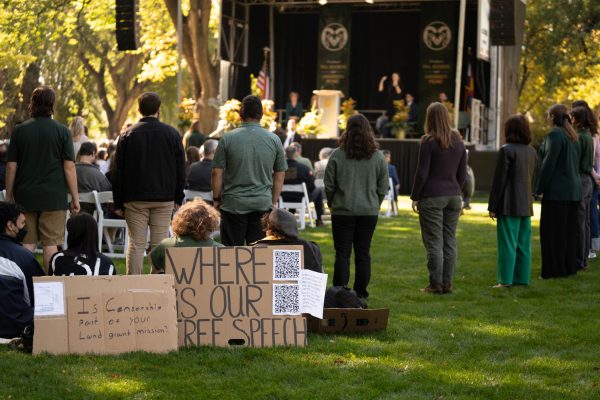How to not culturally appropriate with Halloween costumes
Collegian | Trin Bonner
October 24, 2022
Editor’s Note: All opinions reflected within are views of the individual author only.
With Halloween right around the corner, it’s time to talk about costumes and cultural appropriation.
Cultural appropriation was first termed in the 1980s to discuss colonialism in academic spaces, eventually expanding from academia to the media. Oxford English Dictionary defines it as “the unacknowledged or inappropriate adoption of the customs, practices, ideas, etc. of one people or society by members of another, and typically more dominant, people or society.”
Halloween has been riddled with offensive costumes for some time now, but as society progresses, so must the narrow view on appropriation.
“People have to stop trying to seek authenticity in the ways in which they are trying to mimic things that have historically been problematic or have been utilized outside of a cultural context,” said Aaunterria Bollinger-Deters, a visual culture theorist working as an ethics instructor at Colorado State University.
Here are some basic guidelines on how not to offend groups.
Avoid religious, tribal, ethnic costumes
Basically, no turbans, Indigenous clothing, tribal markings, Cleopatras or dreadlocks if you’re not from that culture. For example, don’t wear a sombrero and mustache if you’re not of Latinx descent just for a costume. Their culture is not yours to make a joke out of.
On that note, don’t wear religions as costumes either; go put away that sexy nun costume.
Contrary to popular belief, popular characters in the media can also be used in appropriation. So don’t wear an accent or change your skin tone for a Jasmine costume.
Avoid costumes depicting mental, physical disabilities
How often have you seen the psych patient in a straitjacket costume? The romanticized depiction portrayed by the media of people with mental illnesses experiencing psychotic episodes is not only harmful to the community but completely false, and it creates a stigma against them. Nobody ever thinks that these costumes depict real people who have experienced that.
Ableism has been rooted in our society for hundreds of years, and it’s time to change that. When picking out a costume, remember that even though it’s a character, it can promote a false narrative for the community. So maybe put away that mobility aid and fake limp for your Walter White Jr. costume.
Don’t be transphobic
“Mrs. Doubtfire” is a funny movie until you realize the damage it causes to the transgender community: the transphobic “man-in-a-dress” trope. Using someone’s gender identity as a costume is not funny nor is it original, so put that “White Chicks” costume back on the shelf.
Steer clear from sexualizing children
Now, it sounds simple, yet Halloween stores have proven otherwise. Aisles filled with sexy schoolgirl costumes, sexy baby costumes and pedophilic priest costumes should be thrown away and burned. It’s just weird — don’t do it.
Keep away from tragedies
Don’t romanticize Ted Bundy or Jeffrey Dahmer; nobody is hot enough to forgive for murder. Many victims of tragedies are still alive, so don’t ruin the night for them by making their trauma your costume. On that note, take off the numbers on your wrist and put away the whip.
Cultural appropriation affects everyone, and knowing the real consequences is the first step to understanding.
“Visual representation is extremely important, and when you’re leaning into this ability of being able to dress and go out and have fun, you also have to think about the power of this representation and what you’re conveying and potentially what that can do to someone rather than thinking of it as just a costume because it’s never just a costume,” Bollinger-Deters said.
Reach Alexander Wilson at life@collegian.com or on Twitter @alexgrey0604.








Dave • Oct 24, 2022 at 2:43 pm
Alexander Wilson read the definition and still doesn’t understand what actual cultural appropriation, or Halloween, is. At least half of these examples have nothing to do with any culture of any kind, they’re just insensitive. Halloween and their costumes aren’t intended to “make a joke of…” anything. Do stupid people exist that DO do that? Yes, but that’s stupid people on ANY day of the week, not just Halloween. If you’re so easily triggered by these idiots, you should probably just stay home all the time, because you aren’t built for society – sorry.
Halloween is not, never has been, and should never be a PG holiday. That said, Alex here makes one, and only one, good point that isn’t even cultural appropriation: stop sexualizing children
Lastly, culture is not a thing that is owned by a group or anyone. There is no such thing as “my culture, not yours”. That is how narrow-minded, racist assholes think.
Barb • Oct 29, 2022 at 11:08 am
This reply reads: Thus spaketh the white man
For the creatively-narrow there are ample options for costumes that don’t oppress cultures, disabilities, genders, sexual orientations, etc. This responsible journalism includes discussion on why/how to evolve beyond harmful stereotypes. Halloween costumes can be raunchy and racy to achieve beyond a PG status, but it does take a MA to understand and apply why denigrating costumes are as stale as last year’s tootsie rolls.